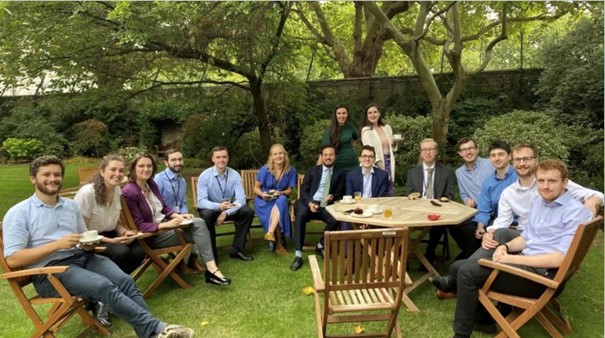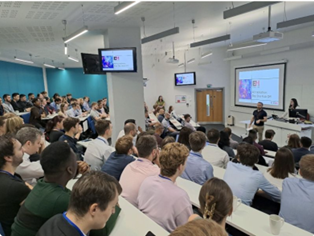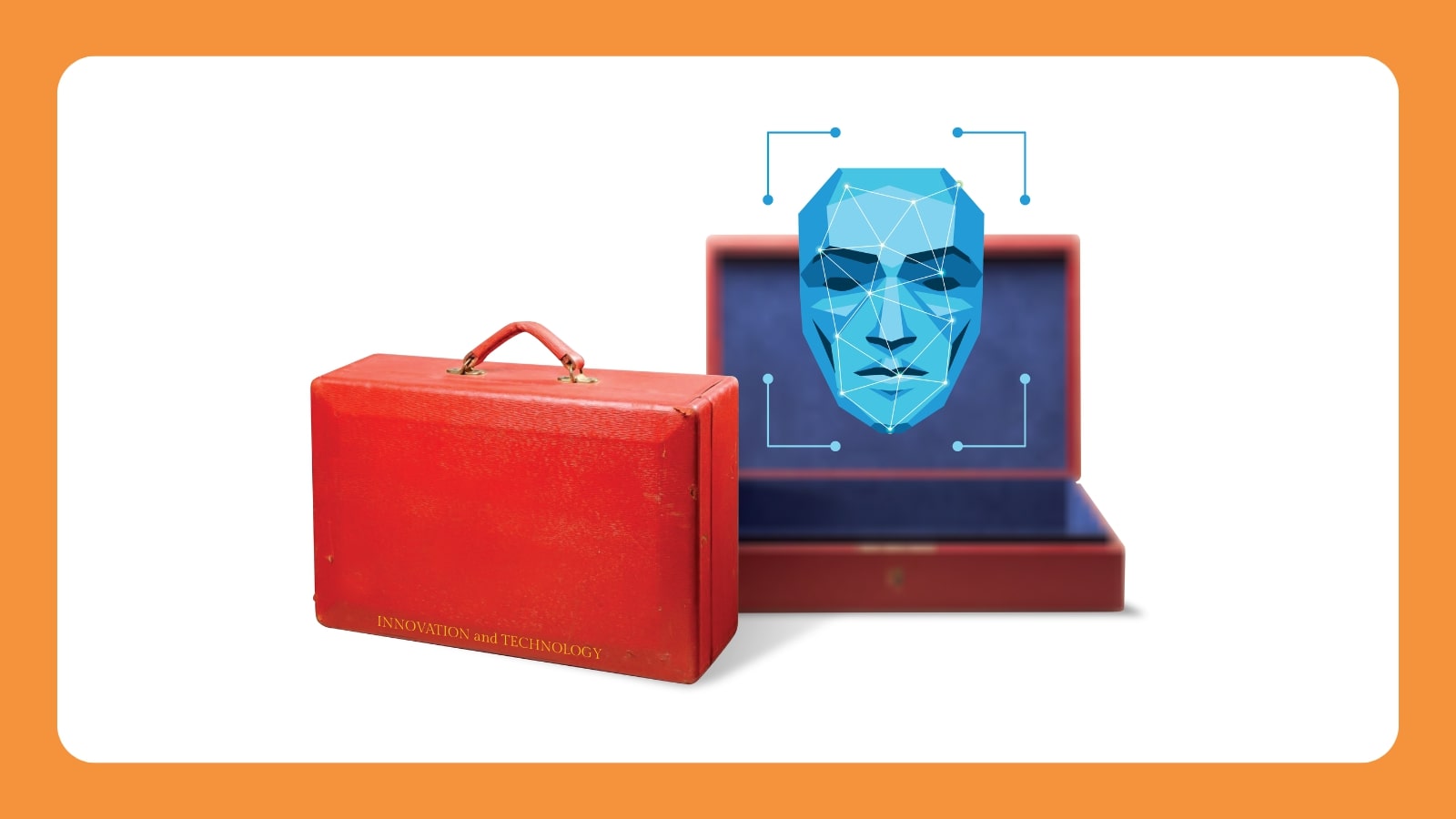Laura Gilbert, Director of Data Science at 10 Downing Street, reflects on her AI and data science teams’ challenges and achievements
I joined the UK government in September 2020, six months into Covid. For nearly a decade, I’d been running a tech startup building health apps as one of the two director-owners and the Chief Technology Officer. I had originally been a particle physicist, and moved into medical technologies via a three year stint in quantitative finance, working in hedge funds. Working to improve the health of largely disadvantaged people in the UK was fulfilling, and building a company was hugely confidence-building, but the pressure of delivering crucial health interventions and at the same time ensuring we always had enough cash flow to protect the jobs of all of our staff, was intense. So was the competition. The time had come to move on, and my partner and I sold the company.
I had been applying for more classic tech roles, mostly focusing on AI, when I saw an advert for the job of Director of Data Science in 10 Downing Street. I thought I’d throw a CV in its direction and see if it stuck. I’ve never had much interest in politics, so proximity to the political class wasn’t a draw, and when I was offered the role I dithered for several days. After deliberation I decided that it sounded like an adventure, and you rarely regret an adventure. On day one, having come through the big black door, I sat down with my new line manager:
“Welcome to the building!” he said, “I have one piece of advice for you – you have six months to make an impact.”
“Wonderful,” I replied, slightly taken aback, “What would you like me to do?”
“Oh –”, he said, waving an airy hand, “I don’t know.”
No 10 had already brought in a small handful of keen, talented young data scientists during the pandemic to illuminate health data for decision makers. It had become apparent to the senior leadership that there was huge power in using data both to model the impact of policy choices, and to track the delivery of programmes (it had been very effective in, for example, making decisions about how to roll out vaccines). The No.10 Data Science Team (“10DS”) was therefore formed, a small expert team of civil servants charged with the (rather vague) mission of improving the use of evidence in government decision making, and I was tasked to lead it.
The first real challenge was, in retrospect not surprisingly, cultural. I naively expected everyone we worked with to be excited about getting more information on their areas of specialist policy interest (“Yay! Data!”). But in fact, that simply isn’t how people are. When we are experts in something, almost everyone is overly confident that their expertise, instincts and even “common sense” will steer them to the right outcome. In fact, research exists that tells us that this is not the case at all. Philip Tetlock’s landmark 20-year study begun in 1995 showed that the average “expert” is not significantly better at predicting future outcomes than a layperson guessing randomly – although they are usually much more confident that they will be proved right! Daniel Kahneman went further: “People who spend their time, and earn their living, studying a particular topic produce poorer predictions than dart-throwing monkeys who would have distributed their choices evenly over the options.” Making decisions is all about predicting the future – what will happen if we do this rather than that – and very naturally, many decision makers naturally assumed that they were doing it perfectly well without these data scientists running earnestly around No10 with their souped-up, off-network macs and matrix-style number streams. Somehow, we had to persuade those people that they could do their jobs better with us behind them.
Our other immediate cultural battle was with departments. In many cases, their incentives were simply not aligned with ours. Departmental staff, not unreasonably, didn’t always want someone “checking their workings” who might then – in the worst case – decide they didn’t agree with their assessment and contradict them in front of the Prime Minister. We needed to persuade departments that we were their ally, which meant that we would need to work closely with them, support them, affirm them for their great work (after all they were doing almost all the hard graft, we were just helping with the evidence) and unless absolutely unavoidable never discredit them. We always try to build up trust in the spirit of the “critical friend” – challenging constructively rather than openly disagreeing with, or trying to overrule, departmental colleagues. If you do that it’s harder to work together in future.
Data scientists are a little different to other types of government analyst. In general they work much more in the tech space – they code, they handle “big data”, and they can often build and deploy software tools such as the flashy interactive dashboards that now power No 10 decision making, predicting the impact on outcomes if one adopts policy option A, or B, or both together. They know how to build data pipelines to bring in live data from departments so as to replace emails with tables and spreadsheets (around 8000 new data feeds are now available to the building), and build up cloud infrastructure to hold the data. They can very quickly but accurately create machine learning models.

Our team can often create a new policy-informing dashboard in a day, and deploy it in under six minutes – highly competitive with industrial tech firms. One challenge in government is the high market rate for experienced experts, but there are many talented younger people whose advanced skills we can develop relatively quickly by pairing them with existing team members. The No 10 name is of course a draw, and one of the first things I did with 10DS was to brand it heavily to ensure that there was a recognised name – a stamp of excellence – to attract technical people who aspire to improve public services. We hire not just for technical aptitude, however, but also for the ability to communicate evidence well and effectively. Crucially, the role of a data science team is not to make decisions, nor to draw conclusions for other people. Our job is to set up the circumstances under which decision makers are able to make better decisions. It’s estimated that adults make up to 35,000 decisions a day and helping to teach people to make those decisions more effectively is one of my most important jobs in government.
We worked through our early blockers with a mix of determination, evangelicalism, careful tactics and, crucially, by finding and working closely with our early adopters and key sponsors. The Diffusion of Innovation Theory suggests that around 16% of people are innovators or early adopters of new things, and in my experience that holds approximately true in the civil service. We therefore decided to focus on the people who were most likely to embrace change. If we ensured that these people had a great experience working with us, they would spread the word and more would join the data revolution.
And mostly, it worked. There were failures, times when policy leads simply decided not to use our work, and times when our powers of persuasion failed and we were simply unable to get our hands on the right data or find a reliable proxy. Some I remember with real sadness, missed opportunities to prevent large sums of money being spent in the wrong way, or policies that we predicted would fail to deliver but couldn’t communicate our concerns effectively enough to change the path of decision making. But more often than not we succeeded, we measured our successes and failures, and got better and better at assessing when a data intervention would work and when not to waste our energy. We grew from four, to 16, to 25, one of the largest teams in Downing Street. And whilst we were building policy support tools, we were also building infrastructure.
Famously, data sharing in government still has some way to go. Data still flies between departments in ever changing excel spreadsheets, often with everyone getting a slightly different cut. To build modern, robust, secure data storage solutions, though, you need experts, and very often, those experts reside in a range of consultancies for whose services you will pay through the nose, and it’s tricky for non-specialists to guarantee the solution they are buying will definitely be both fit for purpose and good value. We quickly set about creating a simple software solution that allows departments to share data with us. It’s been built with the public good in mind, and we have released it on the public code site GitHub where anyone can access it, free of charge. We have had over 200,000 public downloads, and it’s being used by teams across government to reduce their data sharing load. Our next step is to make our wider data infrastructure public and available across government and further afield, a job we have recently handed over to our close colleagues in the new Incubator for Artificial Intelligence.
And so, on to AI.
As a data scientist and fallen physicist, I’ve been doing “machine learning” since university. Machine Learning (ML) is the large subset of artificial intelligence (AI) in which you use data to teach an algorithm how to make predictions about what is likely to happen next, or how to understand and identify objects or events. Incidentally – it’s possible to do AI without data. If I simply build code that instructs a robot to respond appropriately to human emotion I have something that is “artificially intelligent” (see – Sophia the Robot, the first non-human to be granted legal personhood. By Saudi Arabia. Which as a feminist, I find interesting). But most of the time we use data to teach our AI algorithms.
My first really exciting foray into ML/AI was in a high frequency trading firm (RIP!) in which we built “genetic algorithms” to try to trade the market. The idea was to build bots that would make lightning fast buy/sell decisions on rapidly moving markets at microsecond intervals, trying to scrape a tiny bit of profit in each interaction, which could add up to a lot of money. We tried to mimic evolution – testing over historic data, we would kill the bots which lost money, and the ones that made most money we would “breed” together, exchanging blocks of code between them much as DNA is swapped in the creation of gametes for human reproduction. We repeated the process over and over to get the fittest trading bots to try to win at making money. It didn’t work at all – it was highly loss making, but I certainly learned a lot trying.
Machine learning is a crucial component in the data science toolbelt. It lets us take a lot of data and draw useful inferences. All data scientists know how to do this, but of course some are more specialised than others. In early 2022 we started building deeper AI capability into the team. We also decided to change the focus of the No10 Innovation Fellowships, a program launched by my team in 2021. Based on the US Presidential Innovation Fellowships program, and designed to bring certified innovators into government to solve problems, the first cohort had delivered amazing work in four departments. But it was becoming clear that real technical AI experts – builders and do-ers – were what we needed, and after much searching we eventually found seven stone-cold AI delivery geniuses.
Data science and AI is badly under-represented in government, but people with skillsets in these disciplines can be highly effective when driving rapid technical transformation; AI solutions can leapfrog a number of legacy technical issues under the right circumstances. When the ChatGPT revolution arrived at the end of 2022, 10DS therefore already had in place people who knew how to build with all forms of AI including large language models (ChatGPT was not the first by any means, it was just bigger and better). Since then there has been an explosion of interest in AI inside government; finally we data scientists had the chance to be the cool kids.
Join the Revolution
At the start of 2023, 10DS launched a program called Evidence House. I have been known to call Evidence House my “fourth baby” because I was nearly (not quite) as in love with it as with my three human babies when they were born. The idea of the program is to train enthusiastic people of any background in analysis, coding, program evaluation; most of our training sessions involve people bringing laptops and learning to code in python or build AI chatbots.
Every few months we run a large “hackathon” in which civil servants with a range of skill sets are brought together, formed into multidisciplinary teams and set challenges to deliver public services through technology, with often fascinating and impressive results. We have been lucky to enjoy hands-on support from many excellent companies including Microsoft, Google, AWS, OpenAI, Anthropic, Cohere, and the Y Combinator, which help ensure that the teams have everything they need to succeed. We build the best solutions into real products, often seconding hackathon winners into our team for up to a few months, part-time.

For example, the AI Ministerial Red Box was an idea that came out of one of these hackathons. We have upskilled over 1000 people through this program, and these people could step in to help with data and tech should, for example another crisis such as Covid hit, or quickly test a new AI product for safety. We have delivered around 17,500 hours of free in person training so far, and spent only around £500 of our budget doing so. It’s easy to underestimate the power of enthusiastic civil servants working together to effect change, but I believe it is great. Join us or follow our social media (twitter, LinkedIn) and you might end up building the next great innovation in government, or just getting to sleep over in the Natural History Museum with a bunch of AI hobbyists – either way it’s always fun.
In November 2023 I was asked to build up a much bigger team of technical AI experts in Cabinet Office – first 30, and then based on early success, expanded to 70 people. The new Incubator for AI, known as i.AI (“I dot A I”) was created, working closely with the amazing people in 10DS and the Innovation Fellows. The vision is big – radically to improve public services with AI. The majority are new joiners to government, coming in from industry and academia, from Microsoft, Quantum Black, Moonpig, BAE Systems, Newton, Faculty, Tech UK, Deloitte, Imperial College and more, creating a strong technical core of talent that many other international governments are still struggling to attract. The team is buzzing with ideas and enthusiasm.
We currently have 10 projects in “incubation”, many of which we will kill if it turns out they aren’t useful or cannot be delivered; and two major and eight minor projects in testing or early deployment. These include a new version of RedBox, which we hope to roll out to all civil servants to be able to “chat” with their documents up to official-sensitive; Consult, a tool which automates government consultations (expected to save around £120m a year if fully deployed); a tool which addresses the harm patients suffer when inadvertently given complex prescriptions with multiple interacting drugs (estimated to cost the NHS around £1bn annually and cause up to 22,000 deaths a year); a tool which aims to optimise connections to the National Grid, preventing inefficient matching and saving tens of billions of pounds over 5-10 years; and Caddy, an AI assistant that helps public servants to give the public rapid and accurate advice, co-built and currently being trialed with Citizens’ advice but with multiple other uses in government. In many cases, some of our Evidence Housers have helped to build and test these tools.
It’s not all sunshine and roses. We have had false starts, and had to rebuild tools. We have let programmes run too long, wasting valuable resources. And there have been cultural teething problems. However everyone in the incubator is laser focused on public service delivery, ensuring that we all pull together, even when it gets tough.
One of the useful side effects of this work, other than saving money, creating a more efficient public service delivery machine, and improving outcomes, could be to improve trust in government. Many of the early responses on Twitter to the announcement of the creation of the Incubator expressed strong doubt about the Government’s ability to deliver this sort of work; and suspicion about what we would do with it. I believe strongly that we can do this sort of work in-house really well with the right people, and I believe even more strongly that we should. A government without cutting edge tech skills is more vulnerable to everything from cyber attack to predatory companies.
I believe it is our job to change the narrative and gain the trust of the public in our ability to deliver for the public sector. We are therefore very open about our work, engaging with the public and tech companies, and releasing our code once projects pass certain milestones.
You can see details of some of our early projects, contact us or even apply for a job on our website at https://ai.gov.uk. More information will be added as more programs pass through testing and into deployment, and I hope that very soon you will see the impacts of this program in your own role. Watch this space!
Dr Laura Gilbert CBE is Director of Data Science 10 Downing Street, Director of the Incubator for Artificial Intelligence and Joint Chief Analyst, Cabinet Office.
(Editor’s note: Since this article was written, it has been announced that I.AI will move to DSIT)
THE ART OF INFLUENCING DECISIONS
How can you best influence people using data? I won’t give away all of the tricks of the trade, but here are a few things to remember when framing decisions.
Did you know that if you look at data, charts, numbers, facts and the like before making a decision, you will most likely reach a more objectively rational conclusion? A person looking at a data dashboard – or a copy of the Financial Times – will likely make a more effective decision even if the data they are looking at is not related to the decision topic.
Framing is also important: people are generally risk averse, experiencing a loss twice as unpleasant as the same amount of gain is pleasant. This causes them to make a meaningfully different decision about the efficacy of a drug depending on whether, for example, they are told “70% of people who took it got better” or “30% of the people who took it did not get better”.
In human terms, if a person leaves the room after meeting a data scientist feeling as though they understood and grasped the information they are much more likely to agree to future meetings than if they were confused and overwhelmed. Starkly contradicting people’s existing biases – and everyone has them – is also dangerous as it can cause cognitive dissonance that leads people to reject the evidence, even if it’s clearly correct.
When we inform policy makers, when we tell them what the evidence shows, we have to be incredibly careful to present it “fairly”, and not skew the outcome by accident. We also have to make sure that we are presenting it in a way that can be understood – the art of effective storytelling with data is hugely powerful.
1) An aside: two of the three hedge funds I worked for went under whilst I was there, and the third lost a lot of value during my tenure. A curious statistical anomaly that remains unexplained.
2) The Cure for Decision Fatigue, Jim Sollisch, Wall Street Journal June 2016 https://www.wsj.com/articles/the-cure-for-decision-fatigue-1465596928
3) Diffusion of Innovation Theory, EM Rogers 1962. Short explainer: https://sphweb.bumc.bu.edu/otlt/mph-modules/sb/behavioralchangetheories/behavioralchangetheories4.html
4) https://www.hansonrobotics.com/sophia/
5) This experiment was not why that company went under. Honestly. Perhaps it was the fact they hired soley based on the size of the candidate’s IQ, which may not be a sufficiently high-quality indicator of financial acumen.
6) “UK government to trial ‘red box’ AI tools to improve ministerial efficiency “ Financial Times 28th February 2024 https://www.ft.com/content/f2ae55bf-b9fa-49b5-ac0e-8b7411729539
7) I highly recommend Robert Cialdini’s books “Influence” and “Pre-suasion”





